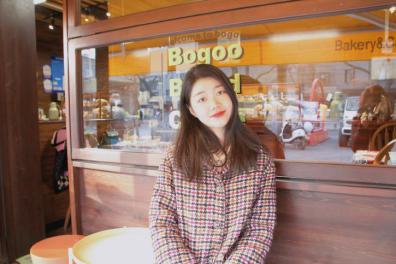党支部书记侯岚为您推荐《力“绣”不欺,勤则不匮》

推荐人:党支部书记侯岚
推荐理由:一团彩线、一根绣针、一双勤劳灵巧的手,让“建档立卡”与“刺绣脱贫”挂上了钩,传承了蒙古族特有的刺绣文化,接连了贫困群众的福祉。
力“绣”不欺,勤则不匮
“Embroidery” and Diligence Will Keep Us Away from Poverty
年过半百的白晶莹是个激情四溢的“女强人”。2016年以来,在各级党委、政府的领导和关怀下,白晶莹逐步摸索出“企业+协会+基地+农牧户”的产业运营模式,先后扶持成立了蒙古族刺绣产业基地、图什业图民族手工艺协会、大学生创业就业扶贫服务协会、沃尔墩刺绣产业发展有限公司,并以带动2.6万名妇女参与蒙古族刺绣产业、带领2895名建档立卡贫困户人均年收入提高2000元的实际工作成绩,成为全国脱贫攻坚战场上一道亮丽的风景线。
Bai Jingying, over half a hundred years old, is a tough and passionate woman. Since 2016, Bai Jingying has gradually explored a pattern of the industrial operation mode of “Enterprises, Associations, Bases, Farmers and Herdsmen” under the leadership and concern of party committees and governments at all levels. After that, she has successively established Mongolian Embroidery Industry Base, Tushi Yetu National Handicraft Association, College Students Entrepreneurship, Employment and Poverty Alleviation Service Association, and Woerdun Embroidery Industry Development Limited Company. She has also made actual work achievements by encouraging 26,000 women to participate in the Mongolian embroidery industry and leading 2,895 registered poor households to increase their annual income by 2,000 yuan, which has become a brilliant scene in the process of fighting against poverty in China.

2019年4月,科右中旗退出国家级贫困旗县序列。围绕“吃生态饭、做牛文章、念文旅经”的发展思路,科右中旗精心打造蒙古族刺绣文化博物馆,把1072种刺绣产品分为7大系列向游客展览展示,使蒙古族刺绣成为当地文化旅游的一张特色“名片”。而通过蒙古族刺绣产业改变了生产方式与创收方式的农牧民群众,在科尔沁草原上垒起了绿色低碳的“金山银山”。
In April 2019, Keyouzhongqi County has withdrawn from the list of National Poverty-Stricken County. Focusing on the development idea of “eating ecological meals, writing cattle articles, reading traveling classics”, Keyouzhongqi County has elaborately built the Mongolian Embroidery Culture Museum, which divides 1072 kinds of embroidery products into 7 series for visitors to exhibit, making Mongolian embroidery a characteristic “visiting card” for local cultural tourism. Moreover, farmers and herdsmen who have changed their production and income-generating methods through Mongolian embroidery industry, have established green and low-carbon “golden, silver mountain” on Horqin grassland.

 学校首页
学校首页